Revd Harold Robinson
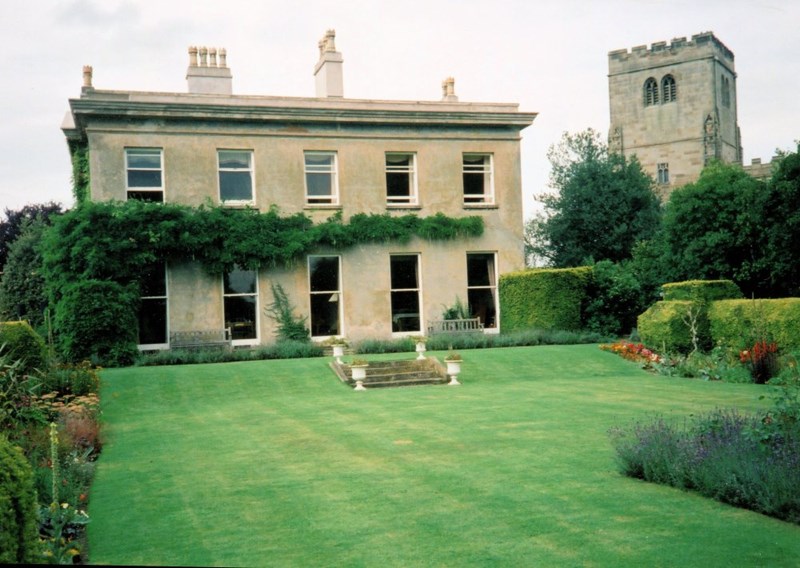 Revd Harold Robinson was the Rector of Plumtree from June 1926 to October 1936. He lived in the Rectory on Church Hill (these days known as the ‘Old Rectory’) with his wife and three daughters.
Revd Harold Robinson was the Rector of Plumtree from June 1926 to October 1936. He lived in the Rectory on Church Hill (these days known as the ‘Old Rectory’) with his wife and three daughters.
Rev. Robinson was described as a big jovial man with a hearty laugh and a friendly and welcoming personality.
In those days Plumtree was still an agricultural community, most of the men in the village worked on the land as low-paid farm labourers, while their wives looked after their families. Typical accommodation for these families were the cottages at Town End and The Green. These were rows of eight terraced houses, each of which held up to 12 occupants. It was said of the Murdens, who had ten children and lived in one of the Town End cottages, that they must have got the children to sleep and then lined them up around the walls.
Despite the relative poverty of the villagers compared to the Rector and his household, the Robinson family were actively involved in village life. The Robinson daughters would sit with village children if their mother was ill or had to go shopping; following the birth of a child, blankets and supplies would be sent; sick children would be provided with calves foot jelly or junket as treatment; children were read to and kept entertained. These and countless other acts of kindness were carried out by the Robinsons without fuss and almost unseen.
The Rectory
The Rectory was open house for the village children, who were often invited to teas in the nursery (which was equipped with a piano) where they were supplied with bread and butter sprinkled with hundreds and thousands. On Sundays, the Sunday School children would leave the church service before the sermon and visit the Rectory garden where they were given a flower to take home for their mother. Also, when visitors arrived in Plumtree, a tour of the Rectory gardens was always on the agenda.
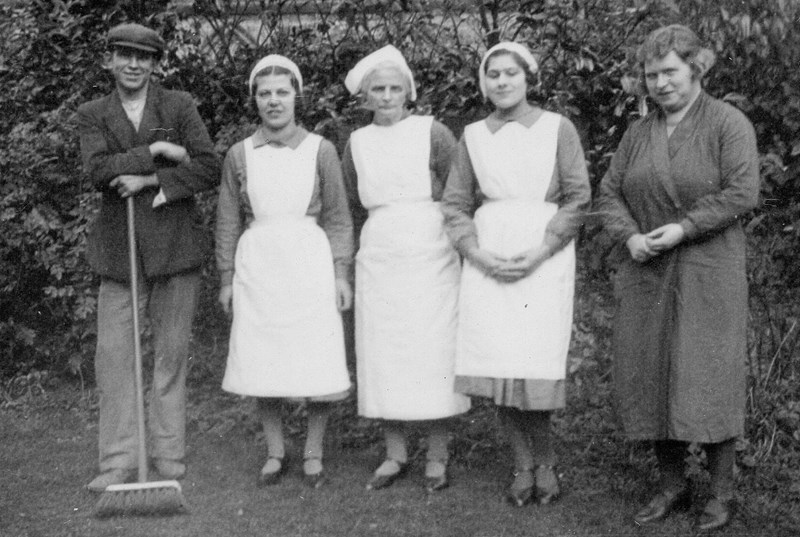 The Robinsons had staff to run the Rectory; but they were more than just employers; they showed a high degree of loyalty to their staff. For example William Coomber, the Robinsons' gardener, already worked for the family when Rev. Harold was rector of Coleorton in Leicestershire. The 1911 Coleorton census shows Rev. Harold and his family living in Coleorton Rectory; and the Coombers living in Rectory Lodge. So, when Rev. Harold was appointed rector of Plumtree, William Coomber, his wife Annie Clara and his younger daughter Gladys came to Plumtree with him and moved into Rectory Cottage on Church Lane, which was at that time owned by the church.
The Robinsons had staff to run the Rectory; but they were more than just employers; they showed a high degree of loyalty to their staff. For example William Coomber, the Robinsons' gardener, already worked for the family when Rev. Harold was rector of Coleorton in Leicestershire. The 1911 Coleorton census shows Rev. Harold and his family living in Coleorton Rectory; and the Coombers living in Rectory Lodge. So, when Rev. Harold was appointed rector of Plumtree, William Coomber, his wife Annie Clara and his younger daughter Gladys came to Plumtree with him and moved into Rectory Cottage on Church Lane, which was at that time owned by the church.
As well as a gardener, the family had a cook (Fanny, who was a Suffragette and had been in prison) and two maids. In this photo of the staff Fanny is in the centre and Gladys Coomber is on the right.
Laundry Cottage on Main Road was also owned by the church; it is so called because that’s where all the Rectory’s laundry was washed.
William Coomber died in 1934 and was buried in Plumtree churchyard. However, following William's death, when Rev. Robinson moved to Eakring two years later, he made sure that Annie Clara and Gladys had somewhere to live and found them jobs as housekeepers to District Nurses living in a three-storey building near the station in Southwell. They later moved into a warden-aided bungalow in Southwell.
Rev. Robinson was the last rector of Plumtree to live in the Old Rectory. The building was sold by the Church of England in 1936 and a more modern Rectory was built further down Church Hill. At this time, the gate between the church and Rectory (used by the Sunday School children) was bricked up, but its outline can still be seen in the wall behind the wheelie bins .
Interestingly, central heating and bathrooms were only installed in the Old Rectory after it was sold!
Biography
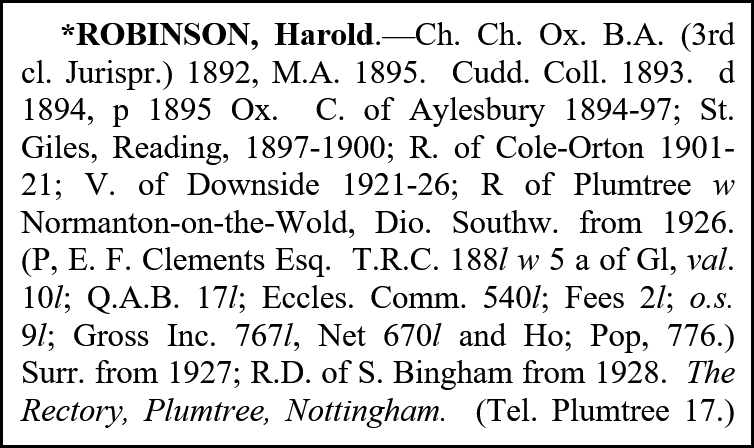 Harold Robinson was born in Leicester in June 1869, the son of Charles Stephen Robinson and Priscilla Whitmore. From his will it appears that Harold's father was a manager of the family-owned Leicester Gasworks, on the board of directors of the Leicester Savings Bank, and also a director of Parr's Bank.
Harold Robinson was born in Leicester in June 1869, the son of Charles Stephen Robinson and Priscilla Whitmore. From his will it appears that Harold's father was a manager of the family-owned Leicester Gasworks, on the board of directors of the Leicester Savings Bank, and also a director of Parr's Bank.
Harold gained a BA in Law from Christ Church, Oxford in 1892. He was ordained Priest in 1895 in Oxford. Before coming to Plumtree, he had been Rector of St Mary the Virgin, Coleorton (1901 - 1921) and then Vicar of Christ Church, Downside (1921 to 1926). He was appointed Rural Dean of the South Bingham Deanery in 1928. This is all shown in his entry in Crockford's Clerical Directory for the year 1932 (see right).
His Family
On 4th January 1899, Rev. Robinson married Annie Arabella Williams at the Priory Church of St Seriol, Penmon in Anglesey.
They had five children including four daughters:
- Alice Mary Gwenyd (known as "Gwenyd") born in 1902;
- Isobel Sarah Priscilla ("Priscilla") born in 1903;
- Marian Amy Muzio Yvonne ("Muzio") born in 1907;
- Edith Anne Philippa ("Philippa") born in 1909.
The following studio portraits were taken by W W Winter of Derby on April 20th 1918.
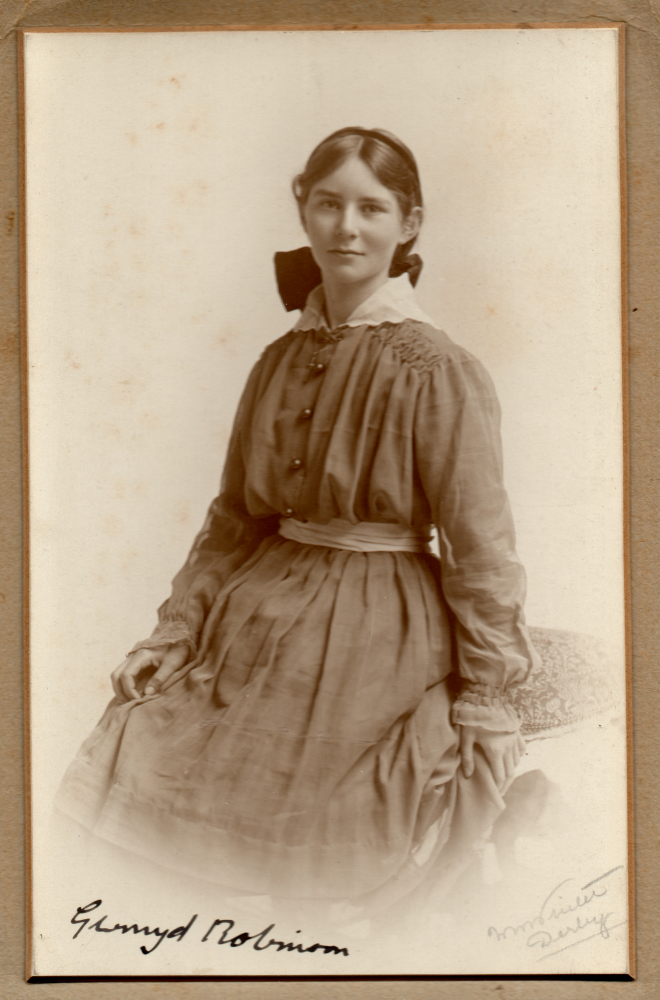 |
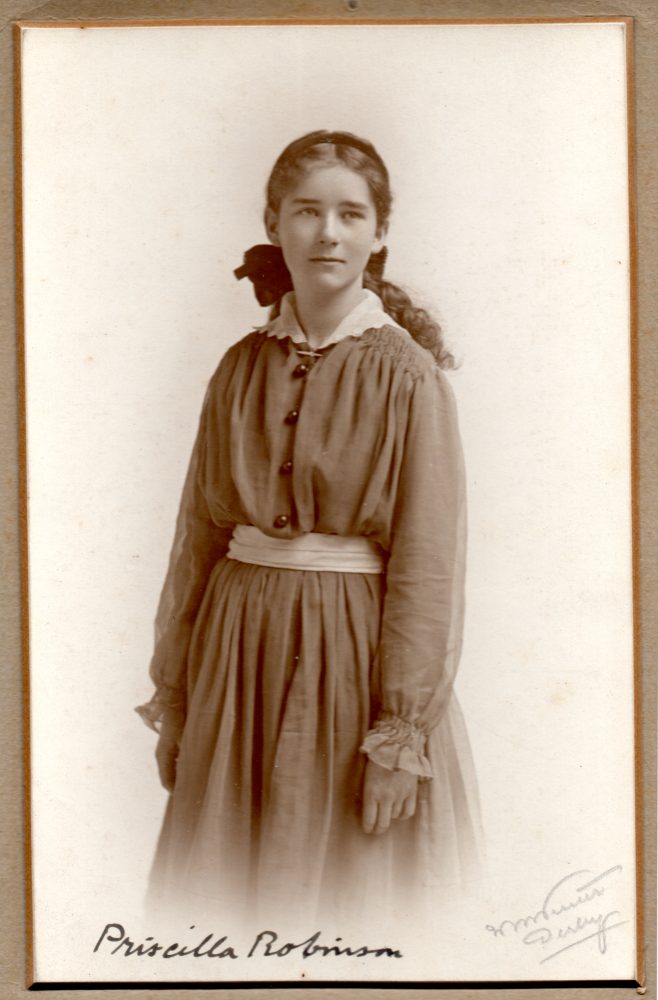 |
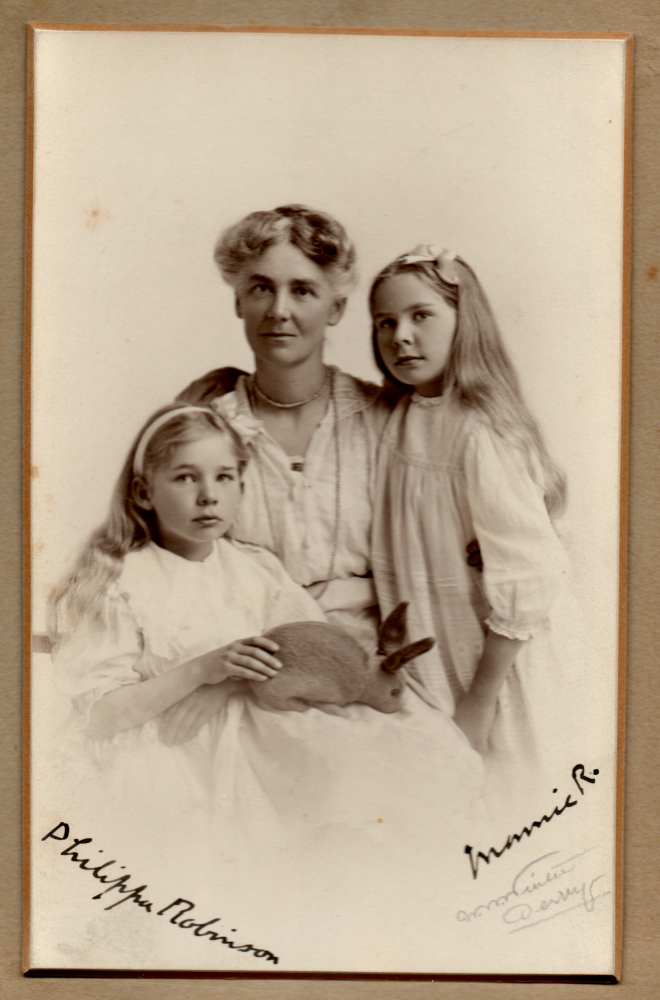 |
| Gwenyd | Priscilla | Muzio and Philippa with Annie Arabella |
Sadly Priscilla died in Coleorton in March 1920, aged 18, where she is buried. Gwenyd worked as a nurse missionary and was often posted abroad.
Gwenyd, Muzio and Philippa lived into their 90s remaining unmarried and ending their days in a nursing home in Malvern. In their wills, they each left money to Gladys Coomber who died in Southwell in 2009 aged 100.
After leaving Plumtree in 1936, Rev. Robinson became Rector of St Andrew's, Eakring. He died on 4th January 1944 aged 74 and was buried in Coleorton churchyard in a grave next to that of his daughter Priscilla. His wife died in March 1957 at "Rosemary Cottage", Prior Road, East Hanningfield in Essex and was buried with him in Coleorton. The two graves occupy a position in a sheltered corner of the churchyard, just inside the lychgate.
An abridged version of this article first appeared in the December 2015/January 2016 edition of the Plumtree Parish Magazine.
Many thanks to Jennie Phimister who knew the family well and inspired this article. Additional research by Phil Carruthers.
This article is based on items made available via the British Newspaper Archive. ©The British Library Board. All rights reserved.